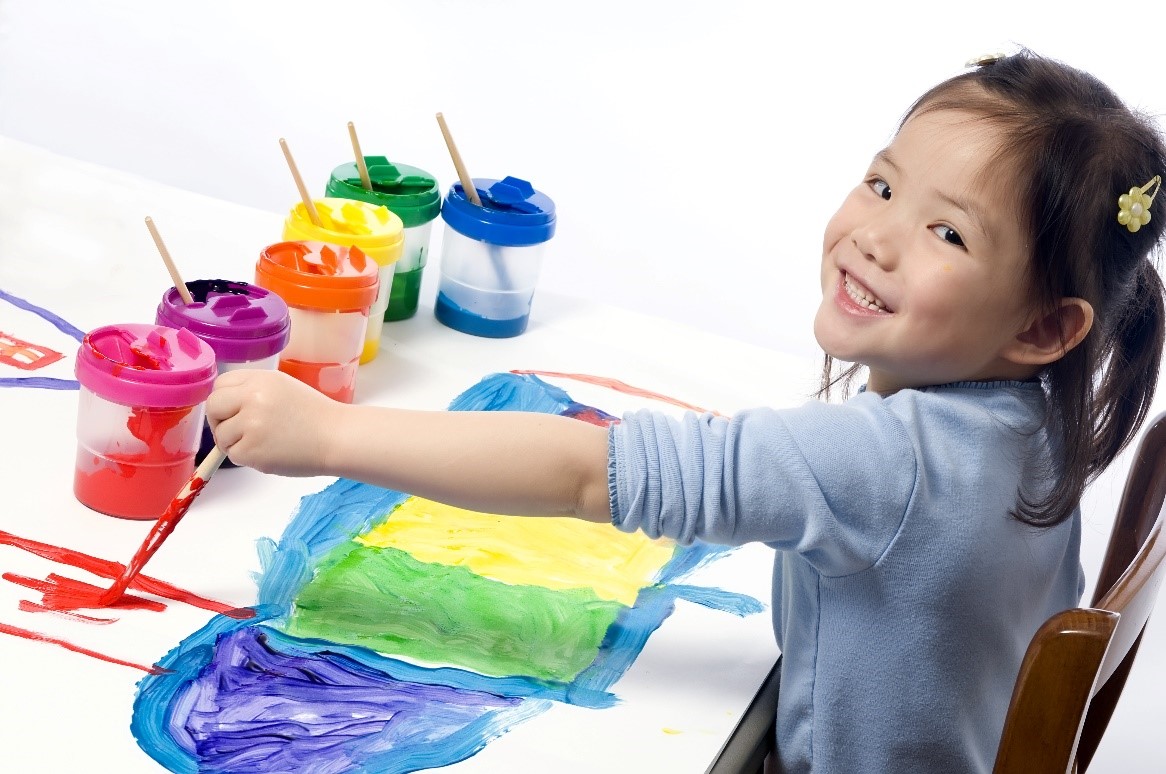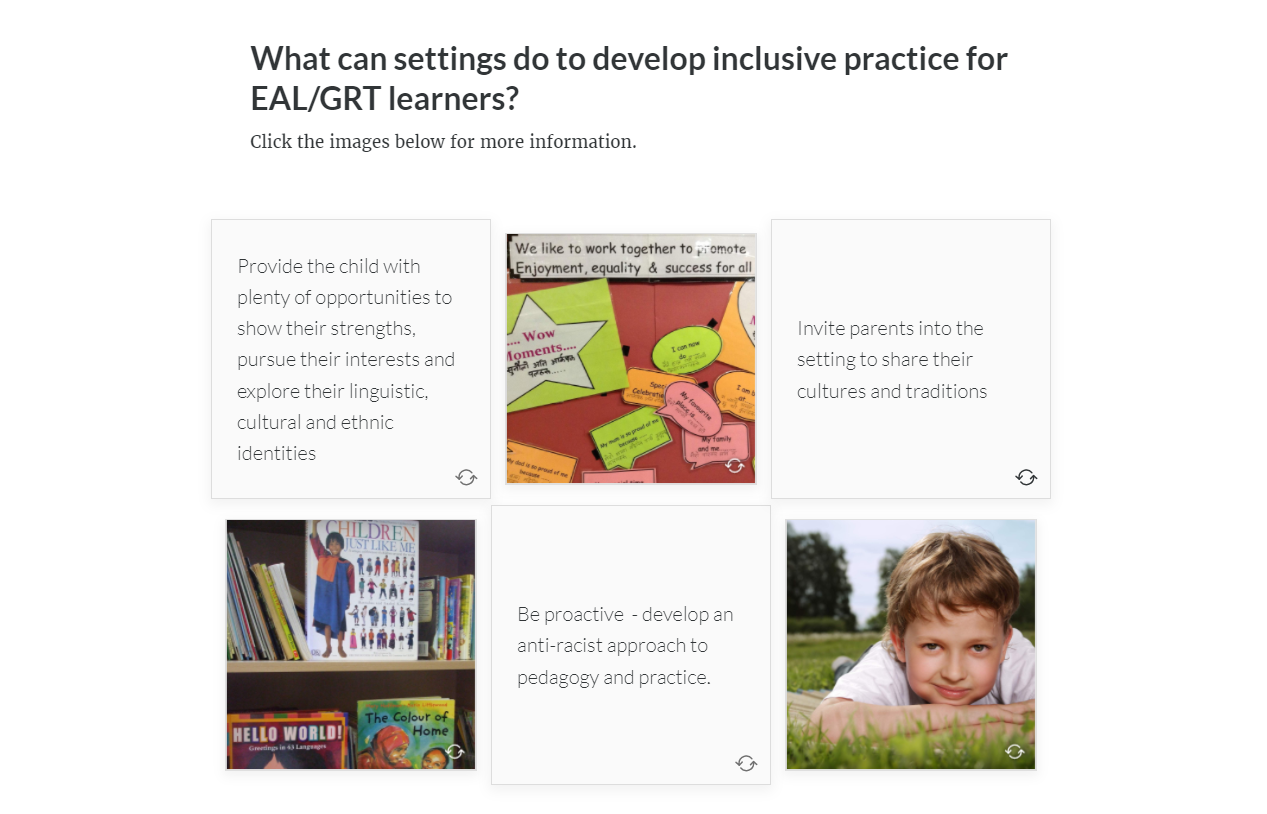Site blog
Anyone in the world
Written by Helen Smith, Lynne Chinnery and Sarah Coles, all of the Hampshire EMTAS Specialist Teacher Advisor team, this blog presents the latest addition to the suite of EMTAS e-learning modules, 'Developing Culturally Inclusive Practice in Early Years Settings'. The new module is aimed at practitioners working in Early Years settings with children and families for whom English is an Additional Language (EAL), or who are from Gypsy, Roma & Traveller (GRT) or Black and Minority Ethnic (BME) backgrounds.

The EYFS Statutory Framework states that “providers have a responsibility to ensure positive attitudes to diversity and difference. Not only so that every child is included and not disadvantaged, but also so that they learn from the earliest age to value diversity in others and grow up making a positive contribution to society”. The themes of inclusion and diversity pinpointed in this statement form the foundation on which the EMTAS Early Years e-learning module sits.
Why Early Years e-learning?
Practitioners in Early Years settings often wonder if what they’re doing for the EAL, GRT and BME children in their care is good practice, as inclusive of the needs of all children and their families as possible. Elsewhere, in settings that don’t have any children from these backgrounds – few and far between these days - work in this area is recognised as equally important. Yet it can be a challenge to find affordable guidance and training to help develop practitioners’ knowledge and understanding of their inclusion brief, without which they may not feel entirely confident when it comes to delivering fully inclusive practice in settings.
There are many questions practitioners might have about their contributions towards the diversity and inclusion agenda. For instance, what advice should they give families whose home language is not English? Should they tell them to carry on speaking their home language(s) to their child or swap to English instead? The answer to this one is that parents/carers should carry on using their strongest language with their child. It really doesn’t matter what that language is; young children can cope with more than one language from an early age and for parents to continue using the home language whilst their child gained exposure to English in an Early Years setting would be one way of raising a child bilingually (there are others). It is also the best way of ensuring that the child develops secure language skills whilst at the same time staying in touch with their cultural and linguistic identity.
For some children, coming into an Early Years setting can bring
many new experiences they have to learn to manage. For GRT children used to an ordered,
uncluttered home environment, the setting might seem chaotic and overwhelming
with its bright colours, numerous toys and messy play. GRT children may have played outside a lot
and may therefore find being indoors sitting still at an activity very
challenging. The e-learning explains
this and other aspects of GRT cultures so that practitioners can grow their
understanding of how best to support GRT children attending their setting.
Other children may come with limited or no experience of being in an English-speaking environment. Accustomed to being spoken to in Urdu or Dari or Polish at home, this can be disconcerting and can result in some children becoming silent in the setting, especially at the beginning – which in turn can be a cause for concern to practitioners and parents alike. The e-learning will help staff better understand things like the ‘silent period’ as well as know what to do to support a child through it.
The term “Black and Minority Ethnic” is more comprehensive and generally encompasses a much broader sweep of children and families, not all of whom will speak another language or have lived in another country. The issues around diversity that staff in settings need to consider in relation to BME children may arise out of language differences, cultural differences, religious differences and/or differences relating to ethnic identity. Images on display in a setting should positively reflect diversity, especially so in settings where the majority population is white. Think also about the books used for story telling; do they include pictures of different kinds of families or of children of different ethnicities? Have you thought about choosing stories that don’t focus on pigs if you work with Muslim families? Or stories that reflect some of the home experiences of your GRT children? If this all seems a bit overwhelming, take heart; the e-learning will help guide you through the diversity maze and empower you to make some carefully considered choices when it comes to provision in your setting.
Towards a more holistic view of the unique child
Cultural and/or language barriers can mask what children are able to do, hiding their interests, skills, abilities and home experiences from staff in settings. Yet it’s really important that practitioners make efforts to find out what children bring with them to the setting. This can help staff better tailor provision so each child receives the best experience from their attendance.
Completing the e-learning will support practitioners to explore and understand what the features of a truly inclusive setting are. This will in turn help them develop their own practice so they give the best start to all their children.
Getting started
Try doing a learning walk around your setting with another member of staff. Ask yourselves if what you see reflects the diversity that exists in the wider world. Do the books you share with children include different languages and images of people from diverse backgrounds? Do you have cooking utensils from other cultural traditions in your home corner? What about the clothing in the dressing-up box?
If you’re not sure where to begin with a learning walk like this, the EMTAS Early Years e-learning can help. It presents guidance and information about a range of issues related to inclusion and diversity using images, short pieces of text and interactive activities like the one shown below.
Screen shot of an interactive activity from the Early Years e-learning module
Included in the module is a checklist practitioners can use to evaluate practice and provision in their setting. It will support you to develop an action plan appropriate to your own children, staff and setting, so any developmental work you undertake will be focused and meaningful, delivering positive change. It also signposts you to further sources of guidance and to resources you might use with children in your setting, many of which are free.
Contact EMTAS to discuss how to gain access to the Early
Years e-learning for staff in your setting.
The price varies according to the number of registrations you need.
Further reading/resources
Free guidance for EYFS from The Bell Foundation:
https://www.bell-foundation.org.uk/app/uploads/2019/01/Guiding-principles-for-EYFS.pdf
Food for thought plus signposting available from Entrust:
Reflecting
on Equality, Diversity and Inclusion in the Early Years | Entrust
(entrust-ed.co.uk)
Suppliers of multicultural books:
Multicultural
Diversity Children's Books - Letterbox Library
Mantra Lingua UK |
Dual language books and bilingual books and resources for bilingual children
and parents and for the multi-lingual classroom.
Free comprehensive guidance pack from Hampshire EMTAS:
Guidance
for Early Years/Year R settings | Hampshire County Council (hants.gov.uk)
[ Modified: Monday, 14 March 2022, 10:18 AM ]

